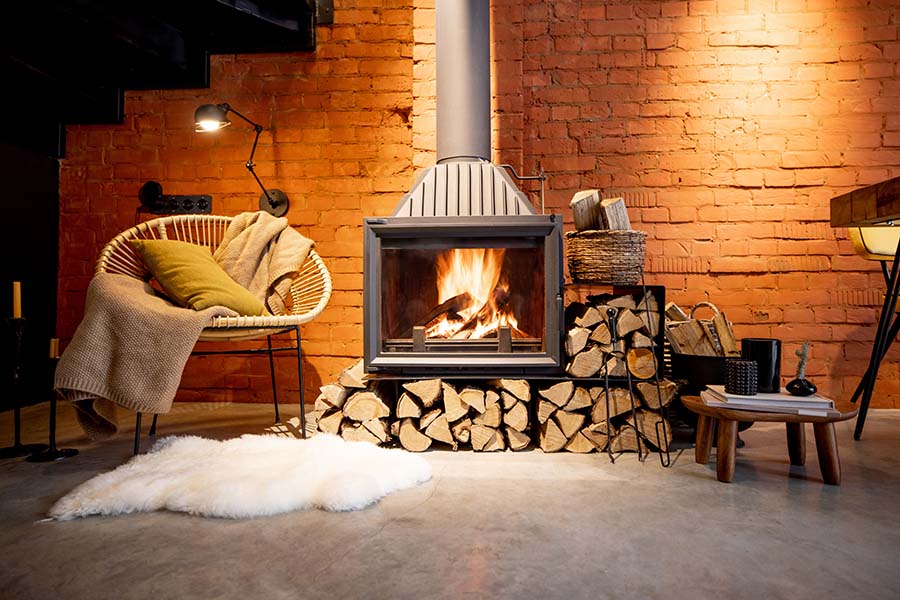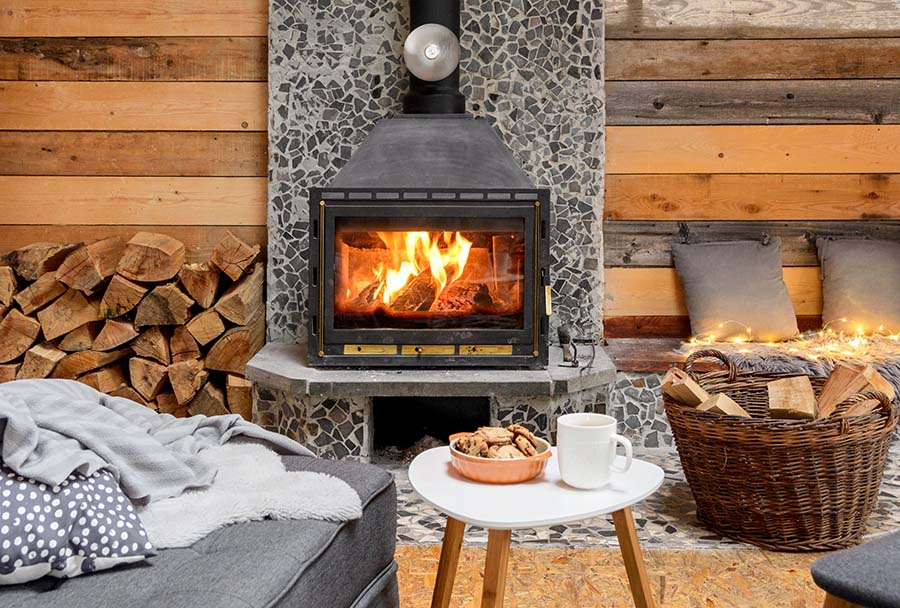- There are 3 main types: Fireplace throat dampers, chimney cap dampers, and flue dampers
- A fireplace damper can be opened or closed manually to allow gases from a fireplace to be vented safely. However, it also protects air from escaping the home when the fireplace isn’t in use.
- You don’t necessarily need a fireplace damper: you can have a fire without one, butthey help prevent the warmth from leaving your home in the winter and cold air in the summer leaving your air-conditioned house.
If you have a fireplace you need to know about a damper to keep things safe. A fireplace damper is something that can be opened or closed to allow byproducts from the fire to be removed from the building safely.
When the fire is not in use the damper is closed and this will prevent cold air from getting into the home. There are different types of dampers and a person will want to learn about the different types so they can find the one that best fits their needs.
The damper is often found on the top of the chimney and it will help make sure the fireplace works safely.
Contents
Chimney Damper

This damper can be found above the fireplace at the top of the chimney. It is used in wood-burning fireplaces. This damper will help improve the efficiency of the fire. It will also help make sure smoke and gases go up the chimney and they do not get into the home.
This will also help keep cold air out of the home when the fireplace is not being used. It will also help keep the warm air in the home while the fire is burning. A damper will also keep the rain and other debris from outside from getting into the home when it is closed.
Flue Damper
A flue damper works are the safe way that a chimney damper will work but this damper is used most commonly with wood-burning stoves. This will be used to help reduce the draft that is getting into the home. It will also control the burning rate of the fire.
This flue will reduce the amount of heat that is lost from the home. This will help make sure the stove is working properly with the air vents that go along with the stove. This will also help reduce the chance of rain and other debris from getting into the home when the wood stove is not being used.
When not in use the flue damper does not need to be closed. If the woodstove has a closed-door this will help prevent warm air from escaping the home and cold air from getting into the home.
Throat Damper
This is the type of damper that is on most chimneys. It is metal and it has a picture like a trapped door. It is just above the firebox and along the bottom of the chimney. It can be controlled by a level so it can be opened or closed as needed.
A person can also control how far they want to open the damper. These dampers may warp over time so it is important to have them checked annually.
Top Sealing Damper

This team will set on the top of the chimney. It will be controlled by a cable that will go through the chimney- great for dealing for a drafty chimney.
A gasket is used to keep the cold air from getting into the home. It is also able to form a tight seal so that animal and weather elements cannot enter the home.
This damper is easy to install and is energy efficient. These dampers still need to be checked annually to make sure they are in good condition and they may need maintenance.
Difference Between the Flue and the Damper
The flue is a pipe that comes out of the fireplace and is on the outside of the home. It will help remove smoke and gases and prevent them from staying in the home.
The damper is located on the outside part of the flue and it will control the rate and which the air and the gases can be released from the fireplace. It will also help the cold air from entering the home when the fireplace is not being used.
Reasons a Damper is Needed
There are many reasons why a damper is needed for both wood and wood stove fireplaces.
Keep the Smoke Out
The main purpose of the damper is to allow the smoke to exit the home. The damper will allow the smoke to escape from the flue. This way a person can enjoy their fireplace and not have to worry about the smoke getting in the home.
if the damper is not opened a person will know it immediately as the smoke will not be able to escape. All they will need to do is open the damper.
Keep the Air Out
The damper will also keep the cold air from outside from getting into the home. The air would come into the fireplace opening and the damper would keep it out.
Difference Between Throat and Top Sealing Dampers
While both types of dampers can be effective there is a slight difference between the two. The throat damper is around 70 percent effective at preventing air from getting into the home. They are made of cast iron and they need to be maintained so they do not rust.
The top-sealing damper will pull over the fireplace opening and will keep it tight. This will help prevent more air from getting into the home due to its tighter seal.
It will also help prevent more heat from escaping from the home allowing the fireplace to be more efficient.
Gas Fireplaces and Dampers
If the home uses a gas fireplace a damper stop is needed. This will allow the damper to have a gap or two and will not seal completely.
This will help gases escape from the home. This is very important and gas needs to be able to escape or it can lead to serious health problems. Carbon monoxide needs to be able to escape from the home.
A damper is needed to keep the home the same and to keep the elements outside of the home. There are different types of dampers and the damper that will work best for the home depends on the heating source that a person has.
No matter what type of damper a person needs to have inspected at least annually to make sure it is in good working order.

